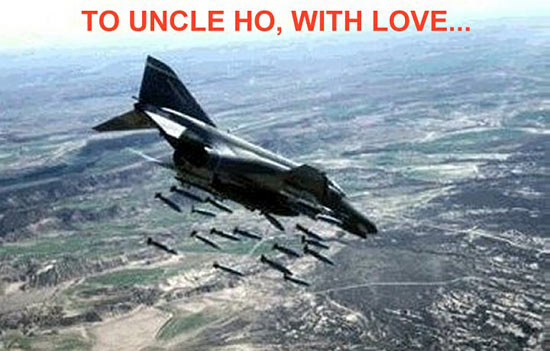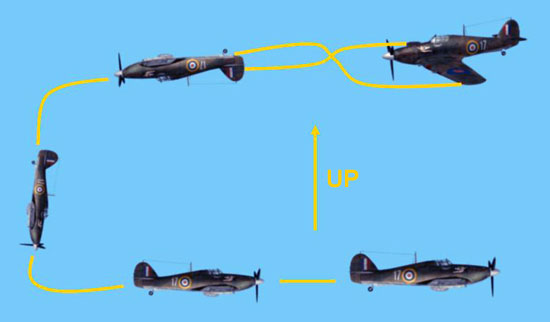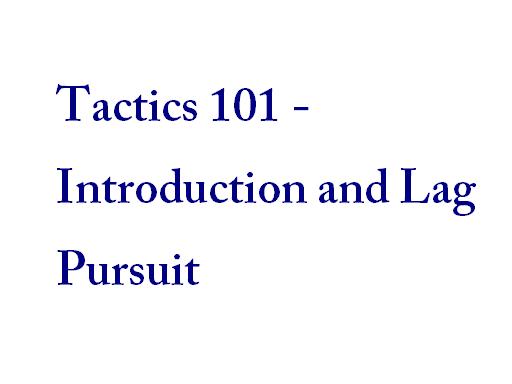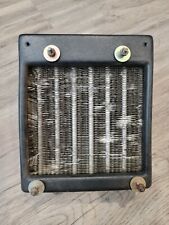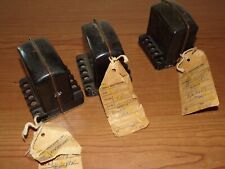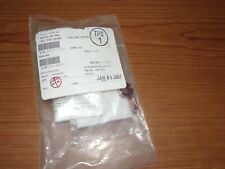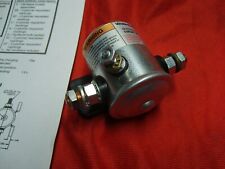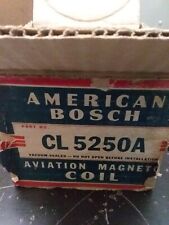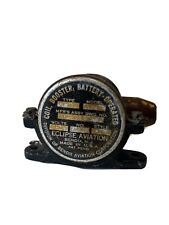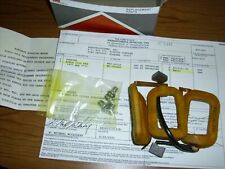Section Four – The Rolling Scissors
Up until now, we have focused this article on the Flat Scissors. But there is another type of scissors that can be flown…the Rolling Scissors. In terms of complexity, the Rolling Scissors is considerably more difficult to fly in a simulation. Why? Because of the BFM skills involved and the view management problems posed by the maneuver. This section will briefly touch upon this type of scissors with the emphasis being placed on BFM and view management.
The Vertical Aspect Of The Rolling Scissors. Earlier, we mentioned that the Flat Scissors was typically flown in the horizontal plane. The Rolling Scissors may be flown in any plane…often times, the vertical. Because of this, you may see the maneuver referred to as the “Vertical Rolling Scissors”.
We also noted that the adversaries tended to fly the Flat Scissors in the same plane of maneuver. By flying “in-plane”, we mean that the two adversaries tend to keep their lift vectors oriented in the same general direction to produce two flight paths that tend to “overlap”. The Rolling Scissors differs in this respect. While both adversaries tend to follow somewhat of the same vertical path, they deliberately maneuver “out-of-plane” to minimize their forward velocity and accentuate their relative energy capabilities. The primary factor in winning the Rolling Scissors fight is the optimization of our energy state relative to the bandit’s position. What makes the Rolling Scissors different is the increased importance of energy and the different use of the sim’s views.
Energy Use In The Rolling Scissors. Here’s a side view of a Rolling Scissors. The plane of maneuver is “vertical” to the horizon for ease of discussion.
The maneuver typically begins with the bandit overshooting the defender while attempting an attack from above. The defender responds to the overshoot by pulling “up” and then reversing to put his lift vector on or behind the bandit. The bandit elects to join the scissors by pulling back “up” after his overshoot…now the battle is joined.
The Effect Of Gravity. In a Flat Scissors, the effect of gravity is relatively constant since the plane of maneuver is “horizontal”. In a Rolling Scissors, since the adversaries are either going “up” against gravity or “down” with it, gravity plays a more significant role in how the planes accelerate (or bleed energy) as well as affecting turn performance (how the one g of gravity adds to or subtracts from turn rate and radius). Gravity will add to your turn performance (smaller turn radius) when coming over the top…and will tend to widen your radius and lower your turn rate when pulling up. When climbing or descending, you want to unload to no more than one g to minimize drag and allow you to maintain or gain energy.
While the Flat Scissors is basically a slow speed contest, this is not necessarily the case in a Rolling Scissors. While the overall objective is to minimize forward velocity, velocity in the climb and descent is used to control turn performance and climb potential. Victory in the Rolling Scissors goes to the adversary who can best manage his energy…in this situation, getting “slow” may not be a good idea!
How does “energy” play a role in winning the Rolling Scissors? Primarily in providing the “oomph” that allows one adversary to fly a longer climbing leg than the other. A higher energy state allows the pilot to orient his flight path more into the vertical, and it allows him to remain in the climb longer. The adversary that cannot zoom as well is forced to roll back towards the ground…in doing so, he is pushed forward.
Perhaps the best way of explaining this maneuver is to go step by step through a typical Rolling Scissors…and point out the various considerations as we go along.
A Typical Rolling Scissors. A Rolling Scissors is usually entered from two situations…one, as a response to an overhead attack, or, two, from a flat scissors situation where an altitude separation exists between the attacker and defender. We’ll use the first as our example. Some of you might recognize this example…it’s from Shaw’s excellent book, Fighter Combat. I’ll add some minor notation to amplify the points of emphasis. Disregard the exact position of the aircraft in the following diagrams. I have placed the red numbers on the aircraft ribbons at the place where the aircraft should be as described by the text.
The Overhead Attack. You pick up the bandit in your high six as he dives down for a gun attack. You begin a hard right turn into the bandit to force his nose into lag. You add aileron as necessary to roll slightly away from the bandit’s flight path…this takes you out of his gun line. This is Point 1.
Your hard turn produces an overshoot. As the bandit crosses your six, you elect to enter the scissors by rolling back left to begin a climb. You continue to pull up as you pirouette in a left roll to watch the bandit as he overshoots to your left side. Once you have your climb angle established, you unload to maximize your zoom potential and continue rolling as needed to keep the bandit in sight out of the top of your canopy. As you do this, you see the bandit has begun a climb as well and is pulling back towards you. At this time you are “canopy to canopy” with the bandit…you both have your lift vectors on each other (Point 2).
Now, you continue to analyze the bandit’s flight path and roll as necessary to point your lift vector behind the bandit. You then add back pressure to begin pulling your nose smoothly to his six. The bandit is also pulling into you…this results in your flight paths tending to come nose-on to each other (Point 3).
At this point, you and the bandit are nearing the top of your climbs with your flight paths converging. Now is when you want to pull down aggressively. Do so and you will “make angles” with a lead turn. Use full power, flaps as needed, and max available g to produce the maximum turn rate in your pull down. Roll as needed to keep your lift vector pointed behind the bandit. Point 4 is the pull down.
Once you have your nose down, unload the g, go full power, retract the flaps if appropriate, and accelerate. Now watch the bandit as you check your speed. In our example, the bandit is going to make a lead turn in the vertical as we dive down on him (Point 5). He will signal this by beginning his pull down before we pass his 3/9 line. Does this mean he’s going to use this lead turn to gain an advantage?
Maybe…but it will only be illusory, because by cutting short his climb into the vertical, he’s going to lose a little overall energy potential. We continue our descent and throttle back to keep our speed around corner. As the bandit comes “over the top”, we wait for him to get his nose “buried”…well established in a nose down attitude…and then we set the hook! Boom! Back up into the vertical we go!
As you begin your second pull up, do not use max g. Instead use your best sustained g…that will be about 3-5 gs for the typical fighter. Level your wings and pull up…as before, pirouette roll as needed to keep pointed at the bandit’s six. Do not fly out in front of the bandit. Point behind him! Once you have your nose up, then unload again and use your airspeed to gain altitude.
In your climb, you will see the bandit attempting to stop his dive and pull up and into you. This series of rolling pull ups and downs is what makes the maneuver a Rolling Scissors. Assuming each pilot flies good BFM, the victor in this contest will go to the plane that has the better energy sustainability characteristics. The pilot of that plane will be able to fly extended pull ups and tighter pull downs that will tend to force the other plane forward along the axis of the scissors.
View Use In The Rolling Scissors. It is not unusual for the Rolling Scissors to maintain one direction of roll. As each adversary rolls about the other, they will look at each other out of the tops of their canopies. As they roll to point behind each other, they will see each other out of the side of the canopy that is the direction of roll. This tendency to look only in one direction is different from the bi-directional view technique used in the Flat Scissors.
Separating from the Rolling Scissors. Your best chance of a successful separation is when you have pulled down into your nose low acceleration attitude. Unload to one g or less and dive out of the fight. Roll unloaded as needed to watch the bandit. Be ready to counter any follow-on attack.
Conclusion
Here are the main points to take from this discussion:
- Enter a scissors with caution. Once in, it will be difficult to get out.
- Generally speaking, the lower wing loaded fighter has the advantage, pilot skills being equal.
- The Flat Scissors is a slow speed contest. Be proficient at slow speed flight techniques. Know how to use flaps.
- The Rolling Scissors is an energy fight. Know your corner velocity and energy gaining and sustaining techniques.
In any case…this is what it’s all about…












